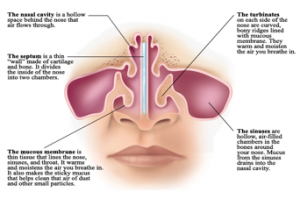Cases that do not meet these stringent criteria (eg, where there is a lag of several days before the onset of symptoms, or when there is no single massive exposure but rather repeated exposures over days or weeks, less massive exposures, or a shorter duration of symptoms) are subsumed under a broader category of “irritant-induced asthma.” 
Improvement in asthma symptoms while off from work or on holiday is not specific to WRA (patients with other asthma can also feel better when not at work), but this is a sensitive indicator for OA related to a work sensitizer (especially relatively early in the course of disease) and for WEA. A positive response occurs in about 88 to 90% of those patients with confirmed sensitizer-induced OA vs 76% of those without OA (but who still may have had WEA). Of those patients with asthma that was not work related, 41% and 54%, respectively, have reported improvement during weekends and holidays, emphasizing the need for additional, objective tests for accurate diagnosis Viagra Online. Airway responses to LMW (chemical) sensitizers are more commonly isolated late responses, and workers can present with evening cough or other asthma symptoms after work as the primary symptom(s), with improvement at times requiring several days away from exposure.
Additional work-related symptoms of allergic rhinitis increase the probability of sensitizer-induced OA, while work-related dysphonia (which is more consistent with VCD) has been negatively associated with OA. When compared with a SIC carried out in a compensation referral case series, false-positive diagnoses often occurred, both for OA and for asthma itself, when using history findings alone (34% of those with a positive history of asthma had no asthma based on objective test results). In that population, the presence of wheezing that was worse at work and nasal itching at work showed the greatest historical value for challenge-proven OA (positive predictive value [PPV], 0.89 and 0.53, respectively; NPV, 0.32 and 0.70, respectively; sensitivity, 0.40 and 0.48, respectively; specificity, 0.85 and 0.74, respectively). As would be expected, nasal itching was a more sensitive factor among those exposed to HMW sensitizers.